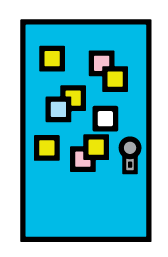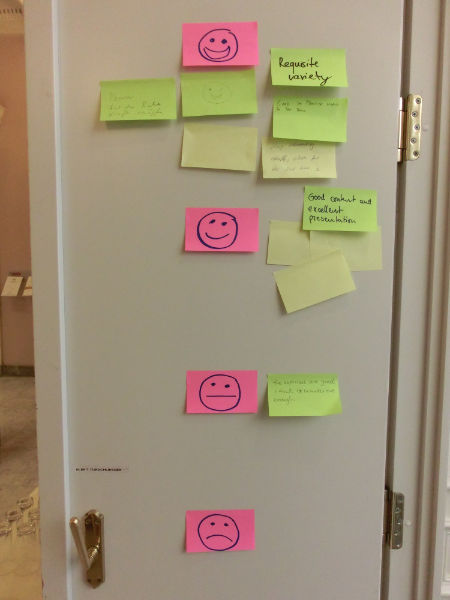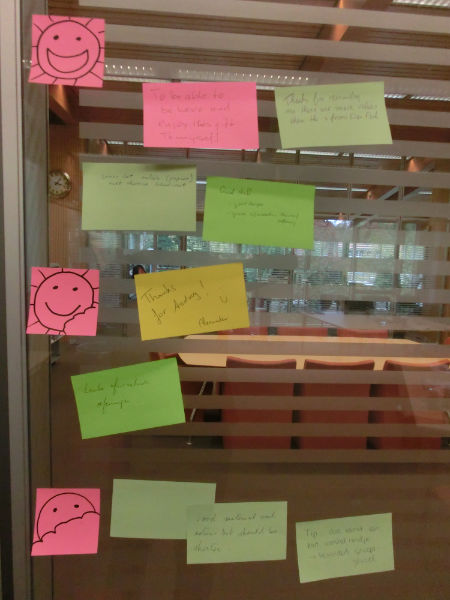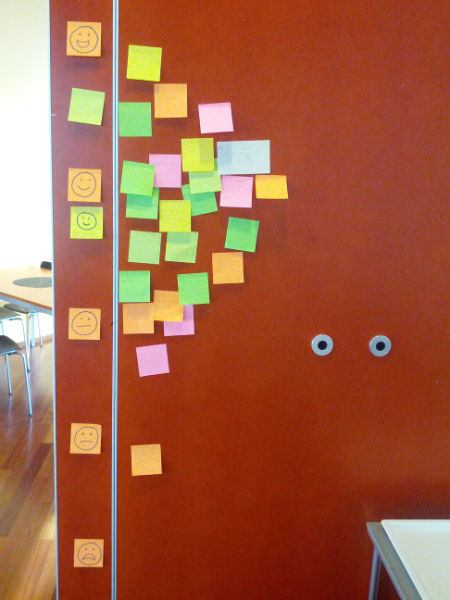Collective happiness and collaboration comes from being able to share the good, the bad and the ugly. That’s why at Management 3.0 we’re all about asking for timely, specific and honest feedback.

Some companies place importance on measuring the happiness of their employees and they often do this by conducting detailed monthly surveys or asking for feedback during the annual performance appraisal. Neither option is successful for getting a pulse on their organization.
So how do we combat this?
The Happiness Door combines team collaboration, employee engagement, and open and honest feedback. Like the Feedback Wall, the Happiness Door is often comprised of Post-It notes with feedback written on them. Like the Happiness Index it assumes that people can act as the best gauge of their own happiness levels.
What is the Happiness Door used for?
The Happiness Door should allow people to give feedback quickly. Feedback at the end of a presentation, training session business meeting, or any other social interaction.
Where to place the Happiness Door?
The Happiness Door should be strategically placed, for example, next to the exit of the room. Preferable a place where everyone walks past when a meeting, conference, or a training session ended.
Important:
All participants must understand the scale of the Happiness index used on the Happiness Door. If you are using numbers like 1-5 make sure to define if the 5 stands for good or bad. Alternatively you can draw your scale by using weather indicators or emojis. Anything goes as long as it is clear for everyone in the room.




At Management 3.0 Workshops the Happiness Door is usually placed in an easily visible space where people are encouraged to give feedback. It can be a general thanks or more specific as in why you didn’t like a certain exercise. Have you tried it out already?

